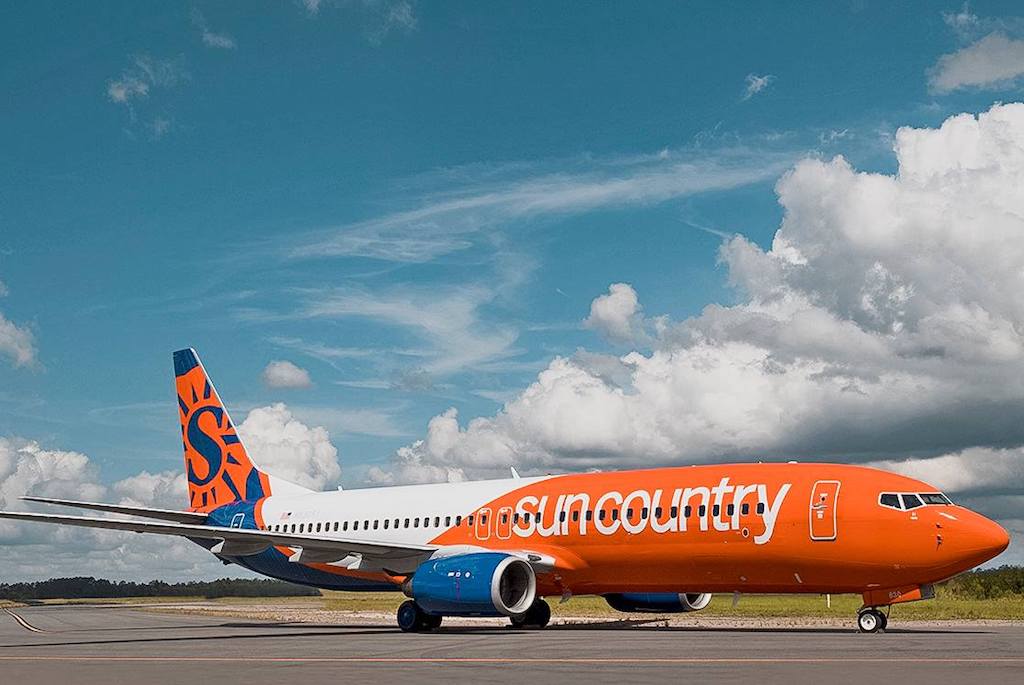Skift Take
Frontier Airlines planned to IPO recently but pulled it back for unexplained reasons. Sun Country's owners may see the market differently. Will it be the next U.S. airline to go public?
Sun Country Airlines, a small Minnesota-based, low-cost carrier owned by private-equity firm Apollo Global Management, plans to file for an initial public offering as soon as April, Sun Country’s CEO said Tuesday in an interview.
“Our earnings are supportive,” Jude Bricker told Skift at the International Aviation Forecast Summit in Las Vegas. “I think there’s a market for an airline that is growing.”
If Sun Country were to go public next year, it would be a fast turnaround for Apollo, which acquired the airline in December 2017. The previous owners, Mitch and Marty Davis, who also control Cambria, a maker of stone countertops, had managed Sun Country more like a family business than a medium-sized airline. Apollo has cut costs and changed the model, dropping first class, adding fees and making more it like Frontier Airlines or Spirit Airlines than an undersized competitor to Delta Air Lines or American Airlines.
While Mesa Air Group, a regional carrier, went public last year, Sun Country would be the first large-jet flying U.S. airline to file for a public offering since Virgin America raised about $305 million in late 2014. The last ultra-low-cost carrier to go public was Spirit Airlines, which listed on the New York Stock Exchange in 2011.
The market, however, may have changed. In 2017, Frontier Airlines, another ultra-low-cost-carrier filed an S-1 with the U.S. Securities and Exchange Commission, indicating it planned a public offering. But several months later, Frontier changed course, perhaps because it couldn’t get the valuation it sought, and executives have not publicly indicated their future plans.
Bricker said Sun Country sees a “window of opportunity,” and wants to ensure it does not miss it.
“We just want to be ready for it, if it is open for us,” he said. “If it’s not, we will wait.”
Sun Country’s Evolution
Bricker, who joined from Allegiant Air before the sale, has sought to make the airline more nimble, shedding smaller and less efficient Boeing 737-700s in favor of larger Boeing 737-800s.
He has expanded the route network, moving beyond the airline’s long-time Minnesota base to start routes from other cities, including Portland, Oregon and Los Angeles. To grow, he has also added used airplanes, and said the fleet, which now consists of 30 aircraft, should reach about 33 aircraft by March. The airline could use some of the proceeds from the public offering to add more aircraft, he said.
So far, under Bricker and Apollo, results have been encouraging. In the first quarter, Sun Country produced an operating margin excluding special items of 23.8 percent, highest among the 11 major U.S. airlines tracked by Jay Shabat, senior analyst at Skift Airline Weekly.
The first quarter is traditionally the weakest for most U.S. airlines, but the best for Sun Country, as its most profitable business is flying Minnesotans to beach destinations during winter. Still, under Apollo this business has become more lucrative, as in the first quarter of 2015, the business produced a 14.6 percent margin.
Last year, the airline made a net profit of $14 million on revenues of $617 million, according to documents filed with the government. Its operating margin for the full-year was 3.8 percent, Skift Airline Weekly calculations show.
As a private airline, Sun Country must provide basic financial results to the U.S. Department of Transportation, but the government does not release it until months after each quarter closes. Bricker said Sun Country’s results later this year should show similar improvements, albeit with lower overall margins.
Bricker also said the airline’s total revenue per available seat-mile, an industry metric measuring how much a carrier makes for each seat it flies one mile, continues to show year-over-year improvement. Investors often highly value the metric, as they can easily compare it from airline to airline.
Pushback
Bricker has been speaking to potential investors at this week’s industry conference, and although he said results have been encouraging, he added some have been less sanguine.
The problem may be the model. Sun Country is the smallest scheduled U.S. airline flying large jets, considerably smaller than Virgin America in 2014, which filed its prospectus when it flew 53 aircraft.
It is also strong in just one U.S. city, Minneapolis, though it continues to try to gain a foothold elsewhere. Some new cities, including Portland, have performed well, Bricker said, while others, including Nashville have not. Because the airline does not have much name recognition outside of Minnesota, it usually relies on cheap fares to stimulate demand.
Another issue is charter flying. As a percentage of overall capacity, Sun Country has a more robust charter program than other U.S. airlines, and it is converting one Boeing 737-700 to an executive-style configuration.
The business is strong, Bricker said, but investors may not be accustomed to evaluating the finances of a charter operation.
“We are small, and we are different,” Bricker said, adding that has has found investors “generally” receptive to his pitches.
“We need to show them a bit more,” he added.
UPDATED: This story was updated to include a mention of the Mesa Air IPO.
The Daily Newsletter
Our daily coverage of the global travel industry. Written by editors and analysts from across Skift’s brands.
Have a confidential tip for Skift? Get in touch
Tags: sun country airlines, ultra low-cost carriers
Photo credit: Minnesota-based airline Sun Country may file for an initial public offering. Pictured is one of the airline's Boeing 737s. Sun Country Airlines
